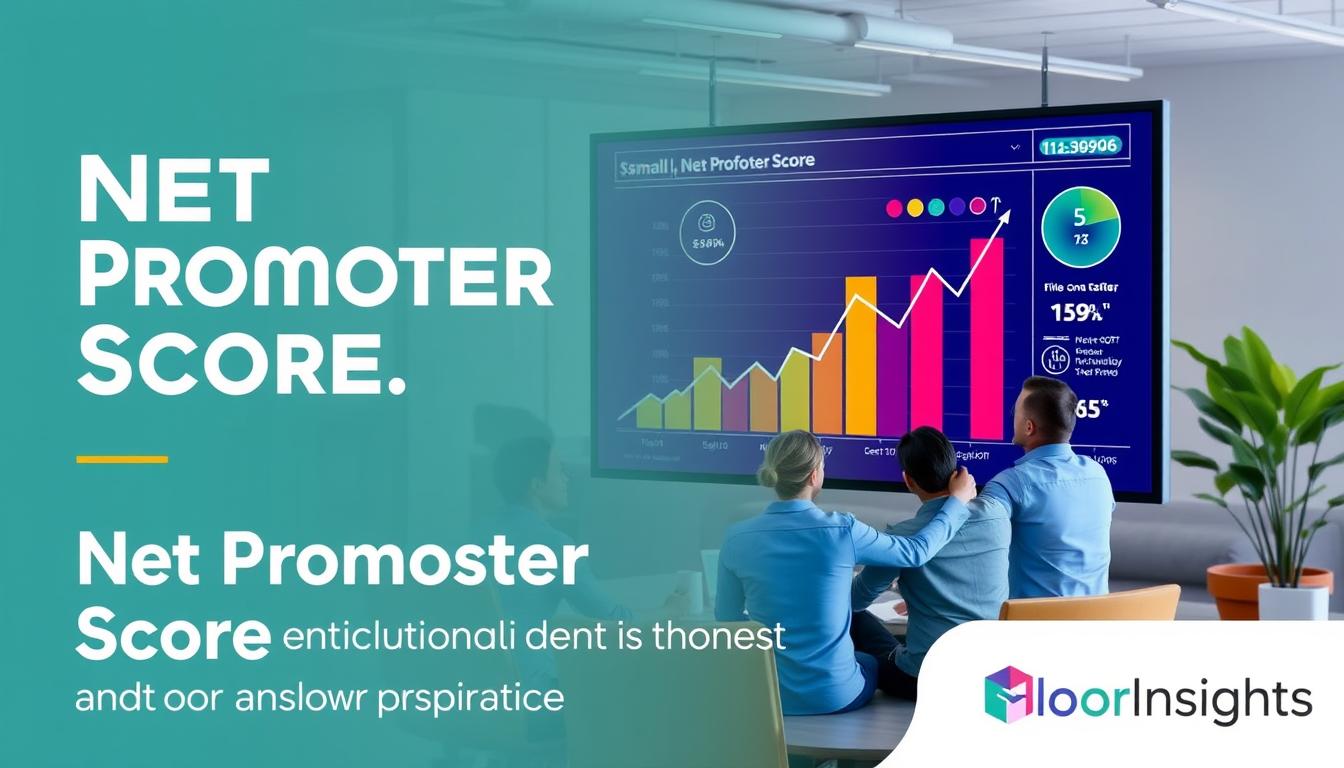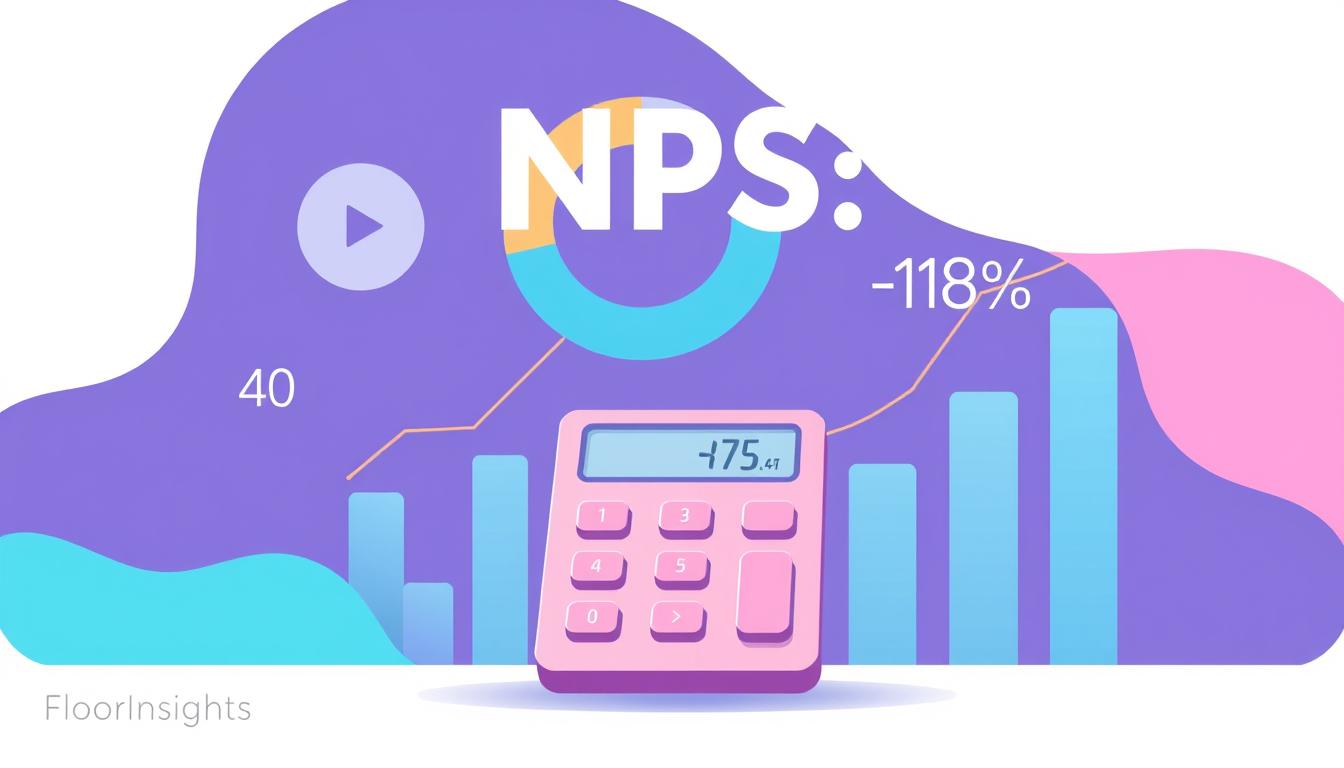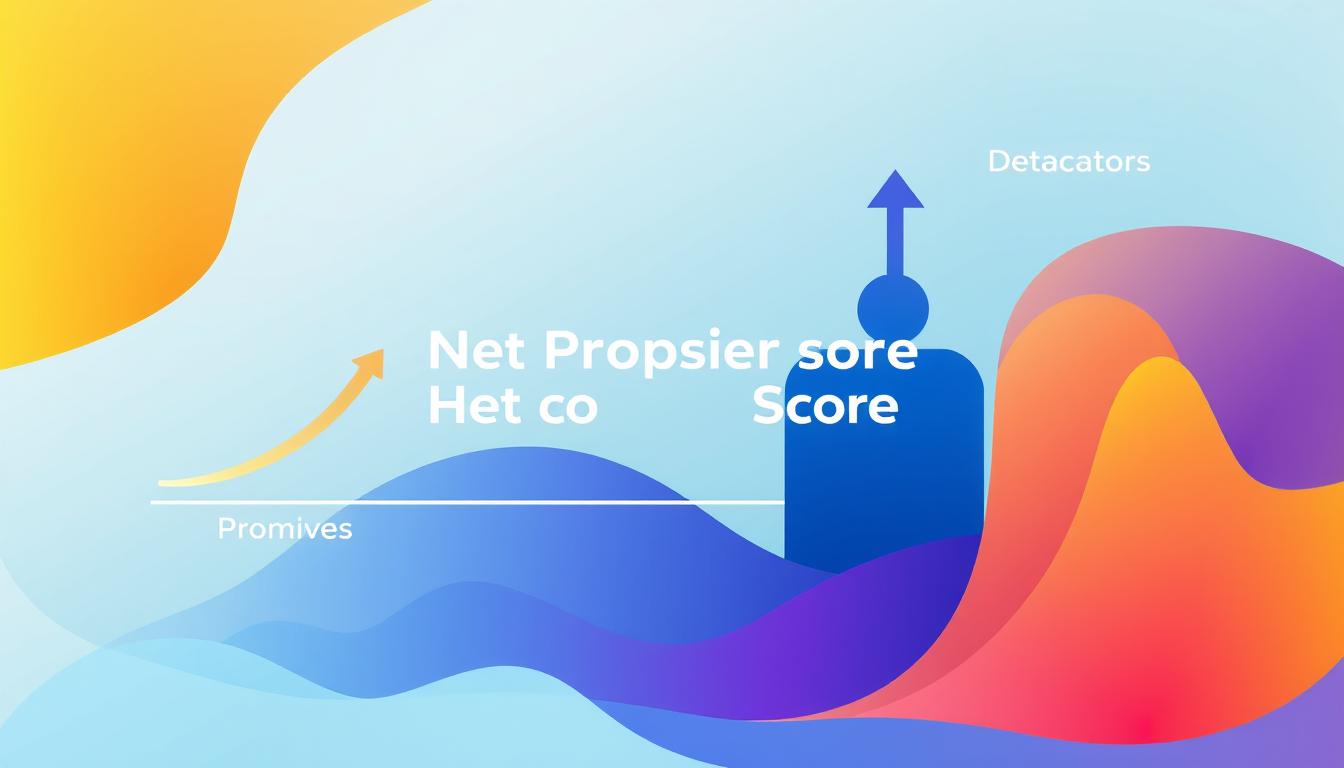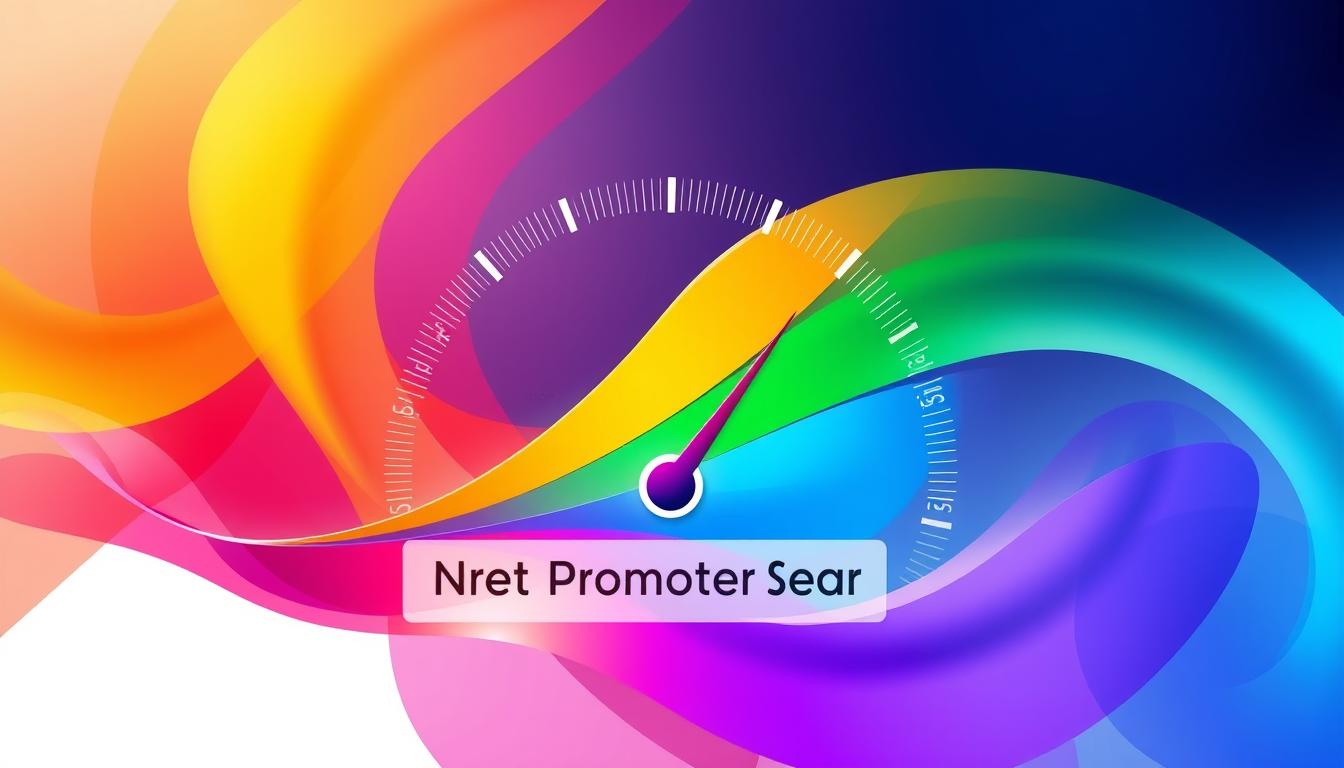In today’s competitive landscape, understanding the Net Promoter Score (NPS) is crucial for small and medium businesses (SMBs) aiming to enhance customer loyalty and propel growth. NPS serves as a vital metric for measuring how satisfied our customers are and how likely they are to recommend our services to others. By implementing effective NPS best practices, we as small teams can gain valuable insights into our customer relationships, leading to actionable strategies that contribute to our business success.
Key Takeaways
- NPS is a powerful tool for assessing customer loyalty and satisfaction.
- Implementing NPS best practices can enhance customer relationships.
- Understanding NPS can help small teams drive growth.
- Effective use of NPS leads to actionable insights for business improvement.
- Measuring customer loyalty through NPS supports strategic decision-making.
Understanding the Importance of Net Promoter Score in SMBs
The importance of NPS lies in its ability to provide a clear snapshot of customer satisfaction and loyalty. For small and medium businesses (SMBs), this metric transcends traditional measures by transforming customer feedback collection into actionable insights. NPS quantifies customer sentiment, allowing us to identify strengths and pinpoint areas for improvement.
Utilizing NPS effectively can yield significant benefits of NPS for SMBs. It encourages dialogue between businesses and customers, fostering a sense of partnership. By understanding customers’ willingness to recommend our products or services, we gain fast-tracked access to important insights that influencers strategic decisions and marketing efforts.
Implementing a robust NPS system not only enhances our customer feedback collection process but also helps in creating a culture of continuous improvement. As we analyze NPS data, we can make informed adjustments that lead to enhanced customer experiences. This leads to greater retention and builds stronger brand loyalty.
Key Components of an Effective NPS Survey
Designing an effective NPS survey requires careful consideration of several crucial components. We should focus on creating a structure that encourages insightful responses from participants. A well-thought-out layout helps respondents easily navigate through the survey and share their experiences.
The first of the NPS survey components is the scoring scale. Using a 0 to 10 scale provides a clear way for respondents to express their likelihood of recommending your business. This simplicity aids in gathering quantitative data that can be easily analyzed.
- Ensure all options are included, allowing every opinion to be captured.
- Include a brief introduction to explain the purpose of the survey.
- Maintain a consistent format throughout the survey for clarity.
Follow-up questions represent another essential element in our effective NPS survey design. Open-ended questions following the main score can reveal the reasons behind respondents’ ratings. Such qualitative insights complement the numerical data and provide a deeper understanding of customer sentiment.
Respondent anonymity plays a role in the success of surveys. Assuring participants that their identities remain confidential invites them to share honest feedback. This element can significantly influence the authenticity of the gathered insights.
| Component | Description |
|---|---|
| Scoring Scale | 0-10 scale to assess likelihood of recommendation. |
| Follow-Up Questions | Open-ended questions to explore reasons for ratings. |
| Respondent Anonymity | Confidentiality assurances to encourage honest feedback. |
| Clear Instructions | Guidance on how to fill out the survey properly. |
Integrating these survey design essentials allows us to craft a comprehensive and effective NPS survey that captures valuable customer feedback. The combination of quantitative and qualitative data enhances our ability to analyze customer perception accurately, paving the way for targeted improvements in our offerings.
Best Practices for Implementing Net Promoter Score Surveys
When we consider implementing NPS surveys, selecting the appropriate timing and designing effective survey questions become crucial components. Proper survey timing can greatly influence response rates. Our experience shows that deploying surveys immediately after a customer interaction can yield more insightful feedback. This is when customers are most engaged and can provide accurate reflections on their experience.
Choosing the Right Timing for Surveys
Survey timing is integral in optimizing response rates. We recommend pinpointing a few key moments for distributing NPS surveys:
- Right after a purchase or service interaction.
- After a critical milestone in the customer journey.
- At regular intervals, such as quarterly check-ins.
By strategically planning our outreach, we can ensure that customers feel motivated to share their thoughts when the experience is fresh in their minds, which ultimately enhances the quality of feedback received.
Crafting Effective Survey Questions
To achieve reliable insights, the design of our survey questions must prioritize clarity and simplicity. Effective survey questions guide respondents towards providing meaningful ratings without ambiguity. Here are some principles for NPS question design:
- Use clear language and avoid jargon.
- Keep questions concise, typically one question per survey.
- Provide an optional comment field for qualitative feedback.
When crafting effective survey questions, focusing on the specific aspects of the customer experience allows us to gather targeted feedback, which is essential for driving improvements and fostering customer loyalty.
Analyzing and Interpreting NPS Feedback
In our journey to enhance customer experiences, analyzing NPS feedback offers valuable perspectives that can shape our strategies. Understanding the distinctions among promoters, passives, and detractors aids us in interpreting NPS scores effectively. By classifying feedback into these categories, we can pinpoint the key sentiments driving customer loyalty or dissatisfaction.
Our approach includes segmenting the responses into three fundamental groups:
- Promoters: Customers who rate us 9 or 10. They love our brand and are likely to recommend us.
- Passives: Those who give scores of 7 or 8. While satisfied, they could easily switch to competitors.
- Detractors: Individuals who rate us 0 to 6. Their negative experiences could damage our reputation if not addressed.

Beyond categorization, identifying trends through analyzing NPS feedback can reveal patterns relating to customer satisfaction over time. We can track how changes in our business practices affect customer perceptions, allowing us to adjust our actions in real-time.
To derive actionable customer insights, we recommend maintaining regular communication with our customers. Open-ended questions in our surveys can unveil deeper motivations behind their scores. The combination of both quantitative and qualitative feedback enriches our understanding, guiding us on how to prioritize improvements in our services.
| Category | Score Range | Potential Actions | Customer Insights |
|---|---|---|---|
| Promoters | 9-10 | Encourage referrals and collect testimonials. | They are enthusiastic and loyal. |
| Passives | 7-8 | Enhance engagement strategies. | Satisfied yet vulnerable to competitors. |
| Detractors | 0-6 | Address issues and seek feedback. | Highlight areas needing urgent improvement. |
Through thoughtful analysis and interpretation of our NPS scores, we can proactively respond to customer needs, fostering loyalty and driving satisfaction across our business. Understanding the nuances within our feedback allows us to make well-informed decisions, ensuring continuous growth and improvement.
Using NPS to Drive Customer Satisfaction and Loyalty
Implementing Net Promoter Score (NPS) serves as a powerful tool for driving customer satisfaction and fostering loyalty within businesses. Establishing clear links between NPS results and specific business goals enhances the effectiveness of the feedback collected. By doing so, organizations can formulate strategies that align customer experiences with overall objectives, ensuring sustainable growth.
Linking NPS to Business Goals
Linking NPS to business goals is vital for translating customer feedback into actionable insights. By setting specific objectives based on NPS outcomes, teams can better understand how to drive customer satisfaction. For instance, a high NPS score may correlate with increased customer retention rates, which directly impacts revenue performance. Tracking these metrics facilitates a clearer view of how customer feedback aligns with financial targets, promoting accountability across departments.
Integrating NPS with Other Customer Satisfaction Measures
Integrating customer satisfaction measures, such as CSAT, can provide a deeper understanding of customer experiences. NPS with CSAT allows businesses to analyze various aspects of customer interactions, painting a comprehensive picture of satisfaction levels. A mixed-method approach to feedback enables teams to identify areas for improvement and success simultaneously, which serves to optimize overall customer satisfaction. The integration of these metrics illustrates not only customer loyalty trends but also illuminates pathways to enhance engagement.
| Metric | Description | Purpose |
|---|---|---|
| NPS | Measures customer loyalty based on likelihood to recommend | Drive customer satisfaction and retention |
| CSAT | Measures satisfaction level after a specific interaction | Assess short-term customer experiences |
| CES | Measures the ease of customer interactions with your business | Identify friction points in the customer journey |
Responding to NPS Feedback: Strategies for Improvement
Responding to NPS feedback is a crucial element of our growth strategy. It allows us to connect with customers on a deeper level while actively seeking ways to improve our offerings. By implementing effective action plans based on NPS data, we not only address concerns but also seize opportunities to enhance customer engagement.
We categorize feedback into three distinct groups: *Promoters*, *Passives*, and *Detractors*. Understanding each group enables us to tailor our response effectively. For instance, while we celebrate and amplify the sentiments of our Promoters, we place significant emphasis on addressing the concerns raised by Detractors.
Our approach to improving customer experience involves several key strategies:
- Segment the Feedback: Classify responses based on customer demographics and behavior to identify trends that require attention.
- Develop Action Plans: Create specific, measurable action plans based on NPS insights that target areas for improvement.
- Set Follow-up Mechanisms: Engage with customers after implementing changes to let them know their feedback mattered.
- Train Staff: Equip our team with the tools needed to handle customer feedback constructively.
By focusing on these strategies, we not only ensure effective responding to NPS feedback but also proactively enhance customer experience throughout our processes. The continuous evolution of our approach is vital for nurturing long-lasting relationships with our customers.
Case Studies: Successful NPS Implementation in Small Teams
In exploring NPS case studies, we found remarkable instances where small teams leveraged the Net Promoter Score to achieve substantial improvements in customer relationships and overall business performance. These real-world examples illustrate how successful NPS implementation can transform service delivery and foster loyalty among clients.
A standout example is Mailchimp. This small tech team utilized NPS surveys to collect customer feedback effectively. By analyzing the results, they identified a critical need for enhanced customer support. Acting on this insight, they expanded their support resources, resulting in a notable increase in customer satisfaction and loyalty rates.
Another remarkable case centers around Freshdesk. As a budding customer support software, they integrated NPS surveys into their user experience analysis. The responses highlighted common pain points, leading to targeted feature enhancements. The outcome was a significant rise in the Net Promoter Score, showcasing that small team examples can yield impressive results through focused strategies.
These narratives not only provide insight into the practical application of NPS methodologies but also emphasize the scalability of successful NPS implementation. SMBs and small teams can draw valuable lessons from these examples, demonstrating that by prioritizing customer feedback, they can drive meaningful change.
Conclusion
In this article, we’ve explored the essential aspects of implementing Net Promoter Score (NPS) practices for small and medium businesses (SMBs). The conclusion on NPS reinforces our understanding that adopting these strategies can lead to significant improvements in customer loyalty and satisfaction. We have discussed how effective NPS surveys, timely feedback responses, and actionable insights work in unison to create a customer-centric approach that enhances our services.
Through our detailed NPS summary for SMBs, we’ve highlighted the importance of not just gathering feedback but also analyzing it meaningfully. By integrating NPS into our customer engagement strategies, we can foster stronger relationships with our customers, leading to sustainable growth. Our final thoughts on customer loyalty emphasize the necessity of listening to our customers, enabling us to adapt and thrive in a competitive marketplace.
Ultimately, prioritizing NPS equips us with the insights needed to elevate our business performance. Encouraging our teams to embrace these practices will not only refine our approach but also solidify our reputation as responsive and customer-focused organizations. The path to improving customer loyalty starts with us, and NPS is a powerful tool in this journey.
FAQ
What is a Net Promoter Score (NPS) survey?
A Net Promoter Score (NPS) survey is a tool used to measure customer loyalty and satisfaction by asking customers how likely they are to recommend our business to others on a scale from 0 to 10. This survey helps us gather valuable feedback to improve customer experiences and drive growth.
How can we effectively gather NPS feedback?
We can effectively gather NPS feedback by designing well-structured surveys that are clear and concise. It’s important to choose the right timing for sending these surveys, such as after a purchase or service experience, to capture immediate customer sentiment.
What are the key components of an effective NPS survey?
Key components of an effective NPS survey include a clear scoring scale, follow-up questions to gain deeper insights, and ensuring respondent anonymity to encourage honest feedback. Utilizing effective survey question design is essential to elicit genuine responses.
What is the importance of NPS for small and medium businesses (SMBs)?
NPS is crucial for SMBs as it provides quantifiable insights into customer loyalty and can guide business strategies, product improvements, and marketing efforts. Understanding NPS can significantly enhance our overall customer experience and retention.
How do we analyze and interpret NPS feedback?
Analyzing NPS feedback involves segmenting responses into promoters, passives, and detractors to understand customer sentiment. We can identify trends and derive actionable insights that guide us in making informed decisions based on our scores.
How can NPS drive customer satisfaction and loyalty?
NPS can drive customer satisfaction and loyalty by linking our survey outcomes to broader business goals. Integrating NPS with other customer satisfaction measures, such as Customer Satisfaction Score (CSAT) or Customer Effort Score (CES), gives us a comprehensive view of customer satisfaction metrics.
What strategies can we use to respond to NPS feedback?
We can respond to NPS feedback by developing action plans aimed at improving our customer experience. Addressing comments from detractors and recognizing promoters will help us strengthen customer relationships and improve overall business performance.
Can you provide examples of successful NPS implementation in small teams?
Yes, there are several case studies showcasing small teams that have successfully implemented NPS. These examples illustrate best practices and the tangible impact of NPS on enhancing customer loyalty and business growth.






